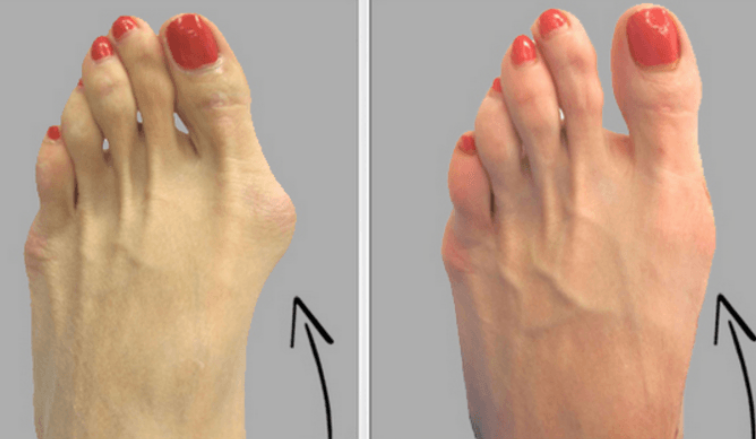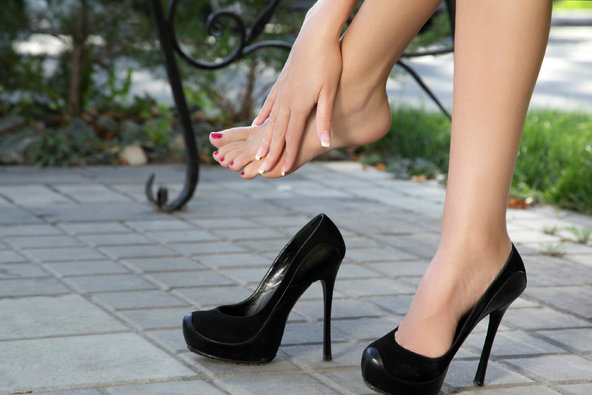Do you require any assistance? Simply reserve your appointment online below
Bunions
Healing without boundaries
A bunion is a bony bump that forms on the joint at the base of your big toe. It forms when your big toe pushes against your next toe, forcing the joint of your big toe to get bigger and stick out. The skin over the bunion might be red and sore.
Wearing tight, narrow shoes might cause bunions or make them worse. They can also can develop as a result of an inherited structural defect, stress on your foot or a medical condition, such as arthritis. Smaller bunions (bunionettes) can develop on the joint of your little toe.

Signs and symptoms of bunions

Symptoms may vary from person to person. Below are some of the common signs and symptoms
A bulging bump on the outside of the base of your big toe
Swelling, redness or soreness around your big toe joint
Corns or calluses — these often develop where the first and second toes overlap
Persistent or intermittent pain
Restricted movement of your big toe if arthritis affects the toe
Causes of bunions
There are many theories about how bunions develop, but the exact cause is unknown.
Factors likely include:
Inherited foot type, Foot injuries , Deformities present at birth (congenital)
conditions that affect both the nerves and muscles such as polio
Experts disagree on whether tight, high-heeled or too-narrow shoes cause bunions or whether footwear simply contributes to bunion development.
overpronation, having a low arch, or uneven weight-bearing in the foot or tendon that makes the toe joint unstable
Bunions might be associated with certain types of arthritis, particularly inflammatory types, such as rheumatoid arthritis.
Risk factors of developing Bunion
- High heels. Wearing high heels forces your toes into the front of your shoes, often crowding your toes.
- Ill-fitting shoes. People who wear shoes that are too tight, too narrow or too pointed are more susceptible to bunions.
- Rheumatoid arthritis. Having this inflammatory condition can make you more susceptible to bunions.
- Heredity. The tendency to develop bunions
- might be because of an inherited structural foot defect.

You are in Great Hands
Treatment

- Changing shoes. Wear roomy, comfortable shoes that provide plenty of space for your toes.
- Padding and taping or splinting. Use over-the-counter, non medicated bunion pads. Also, your doctor can help you tape your foot in a normal position. This can reduce stress on the bunion and alleviate your pain.
- Medications. Acetaminophen (Tylenol, others), ibuprofen (Advil, Motrin IB, others) or naproxen sodium (Aleve) can help you control the pain of a bunion. Cortisone injections also might help.
- Shoe inserts. Padded shoe inserts can help distribute pressure evenly when you move your feet, reducing your symptoms and preventing your bunion from getting worse. Over-the-counter arch supports can provide relief for some people; others require prescription orthotic devices.
- Applying ice. Icing your bunion after you’ve been on your feet too long or if it becomes inflamed can help relieve soreness and inflammation.
If conservative treatment doesn’t provide relief from your symptoms, you might need surgery. However, surgery isn’t recommended unless a bunion causes you frequent pain or interferes with your daily activities.
There are numerous surgical procedures for bunions, and no one technique is best for every problem.
Surgical procedures for bunions might involve:
- Removing the swollen tissue from around your big toe joint
- Straightening your big toe by removing part of the bone
- Realigning the long bone between the back part of your foot and your big toe, to straighten out the abnormal angle in your big toe joint
- Joining the bones of your affected joint permanently

Preventing bunions
It’s possible that you’ll be able to walk on your foot immediately after a bunion procedure. However, full recovery can take weeks to months. To prevent a recurrence, you’ll need to wear proper shoes after recovery. For most people, it’s unrealistic to expect to wear narrow shoes after surgery.
To help prevent bunions:
- Choose shoes carefully. They should have a wide toe box — no pointy toes — and there should be space between the tip of your longest toe and the end of the shoe.
- Your shoes should conform to the shape of your feet without squeezing or pressing any part of your foot.
- Keep track of the shape of your feet as they develop over time, especially if bunions run in your family.
- Exercising the feet can strengthen them. Learn to pick up small objects, like a pencil or pebble, with your toes.
